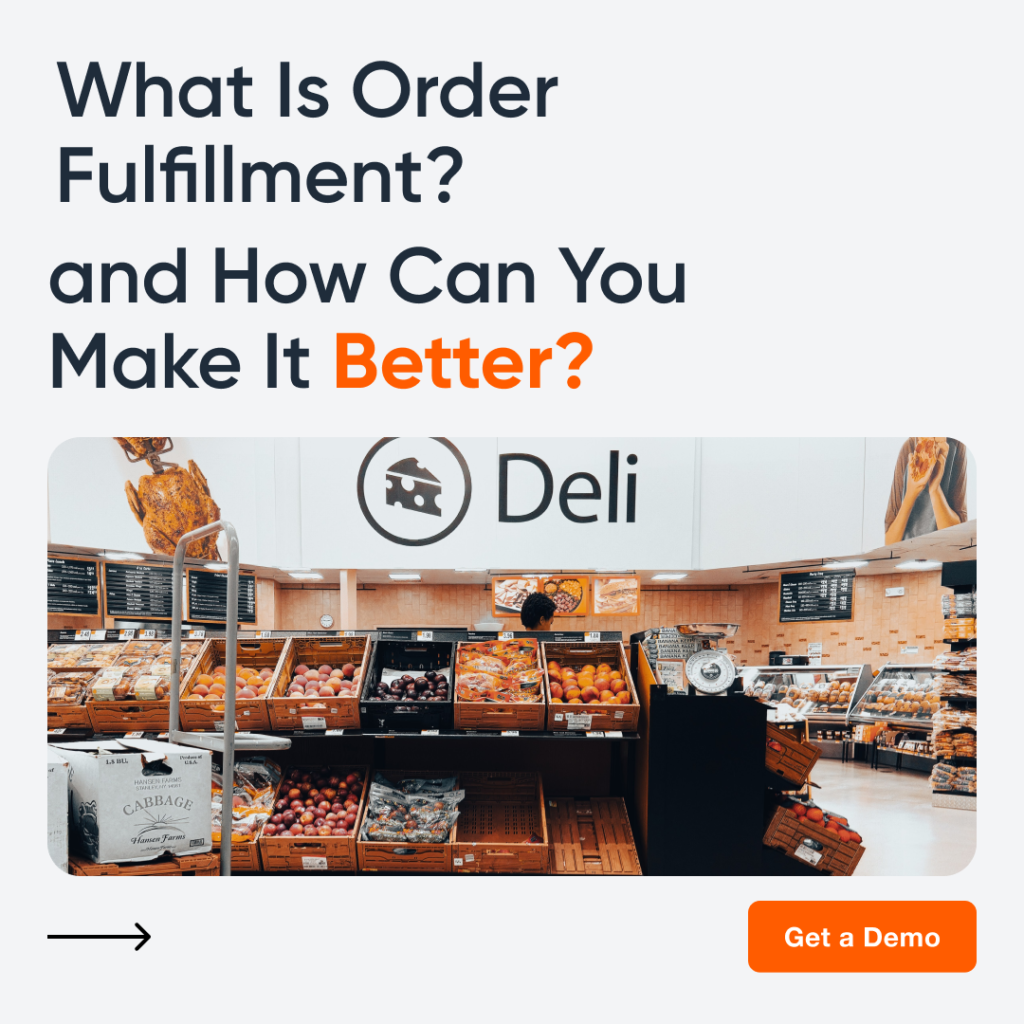
Whether you’re an independent store or a large food chain, your customers want their online shopping orders as quickly, reliably, and affordably as possible. They need first-class order fulfillment.
Once customers place an order, stores must locate the goods, pick and pack them, and ship or deliver them to the customer – while ensuring products are top-quality for happy shoppers. Smaller businesses might handle all this order fulfillment in the warehouse; however, large enterprises require a more complex, multi-layer distribution center strategy.
Let’s look at our three-step guide to optimizing your order fulfillment.
Stage One: Inventory Management
First, warehouse or store managers must count, inspect, and record the proper amount of quality stock received from suppliers. They document low-quality goods for discounted sales or return them to the provider. SKUs and barcode scanners help automate the process to make it more efficient. Using off-the-shelf technology can improve productivity while managing costs.
Now, for smaller stores, it may be that the goods are placed directly on the shelves, with a safety stock kept in the back. While larger shops need designated storage space where they organize products into short and longer-term storage depending on the current demand and predicted future sales.
In either case, figuring out the required product quantities and safety stock can be puzzling, especially when multiple workers are involved. However, consolidating information into one system for everyone to use helps prevent data silos in a team. That’s why Local Express integrates point-of-sale (POS) systems with inventory management tools – the software analyzes your sales and stock data, taking over the hard bit for you. At the end of each day, store managers can use the dashboard to assess which products sold quickly, what needs restocking, and where they could benefit from a larger order in the future.
Stage Two: Picking and Packing
Next, grocers need to prepare the goods for delivery or shipment. Packing teams will select the appropriate packaging to keep products fresh and avoid spillages during transportation. With documented dimensions and weights attached to SKUs in the system, stores can calculate the optimal cost for shipping and deliveries.
Our order management system automatically processes orders based on product type, quantity, and location in the store – or distribution center if you’re one of the big guys. This tells staff exactly what they need to pack, where to find it, and how. Pickers can select goods for each customer as they walk around the store – or drive around the warehouse – following paper or digital order slips organized side-by-side based on store layout. This means pickers can prepare multiple orders simultaneously to reduce the transit time.
Stage Three: Last-Mile Delivery
Last but not least, delivery teams or carriers transport your goods to the end customer. Often, the provider determines delivery fees by distance and/or package weight. This is where our third-party last-mile delivery management can help keep costs low.
Our multi-vendor system automatically optimizes delivery times and cost options for regular and rush orders. If your store has its own drivers, we can provide you with a fully integrated driver app to streamline logistics with tracking and signature options. Your customers can choose to order online with curbside or in-store pickup too.
You can process an order on your store app with us in two clicks. Our platform handles multiple orders at the same time for every delivery type.
Ready to optimize your order fulfillment?






